For now I described how four control blocks work (VCO, VCA, VCF) and how sensors work, now it's time to put it together.
In order to mix signals from sensors in desired ratios, I used again two inverting summing amplifiers, one for VCA and another for VCF. The schematics for one string looks like this:
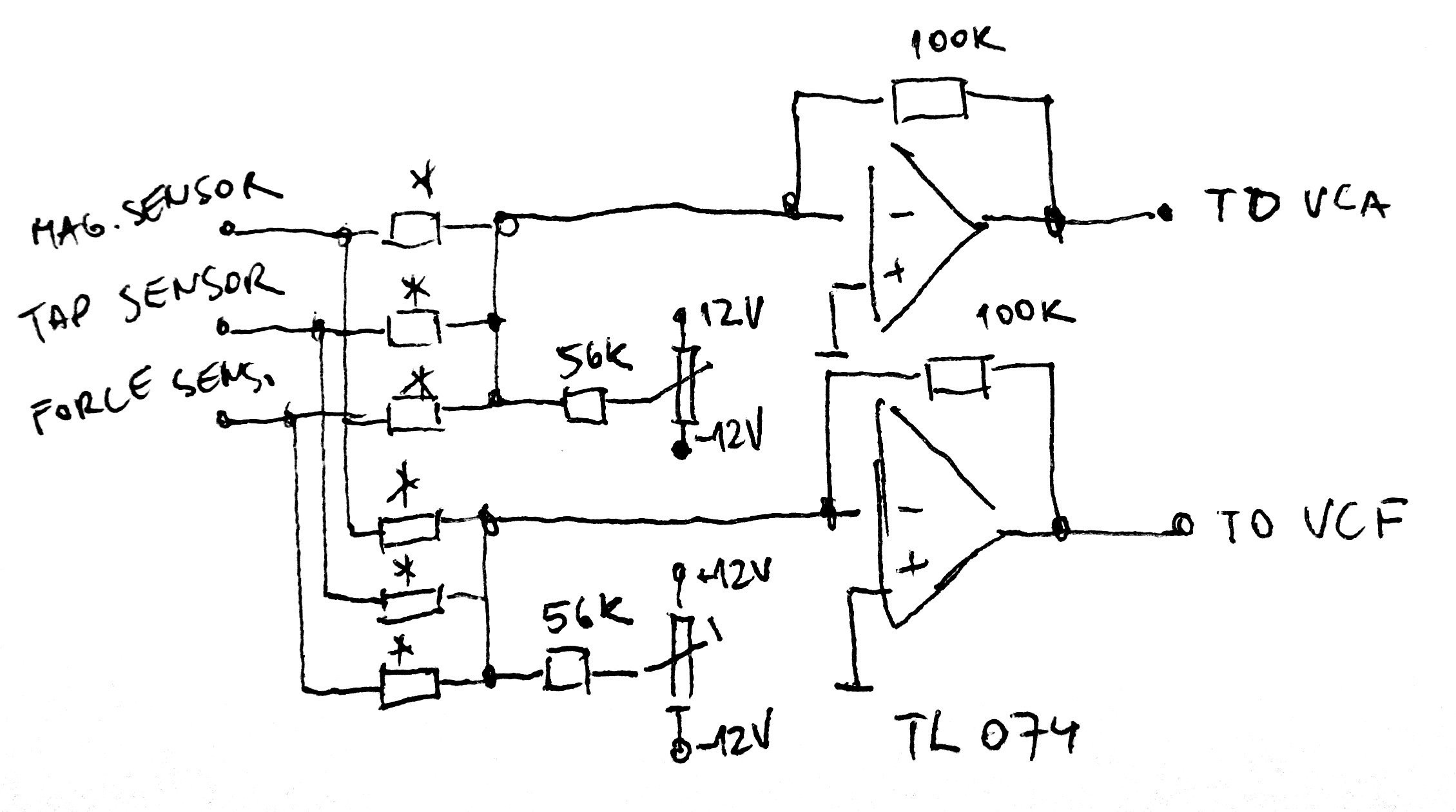
There is six resistors marked with asterisk, setting gain for each of three sensors for both VCA and VCF. In fact, I used only four resistors - I didn't need the force amplifier to set gain (volume), only filter (tone color). Similarly, tap sensor only affected gain, not filter.
The only electronic PDF document I have is for VCO, all others were not drawn and complete circuit of the instrument was worked out on the go (improvised), I just printed out pinouts of key parts - LM339, LM13700 and TL074. Since no electronic documentation exists, I drew the complete schematics by hand:

Notice a few quadrupled blocks - as there are four strings, requiring four separate sound channels. The amplifier is ready to go TDA7266 module, I was lazy.
Next-day edit: It looks awful. I redrawn the schematics in proper schematics editor. See files section, please.
Complete electronics on plywood sub-panel
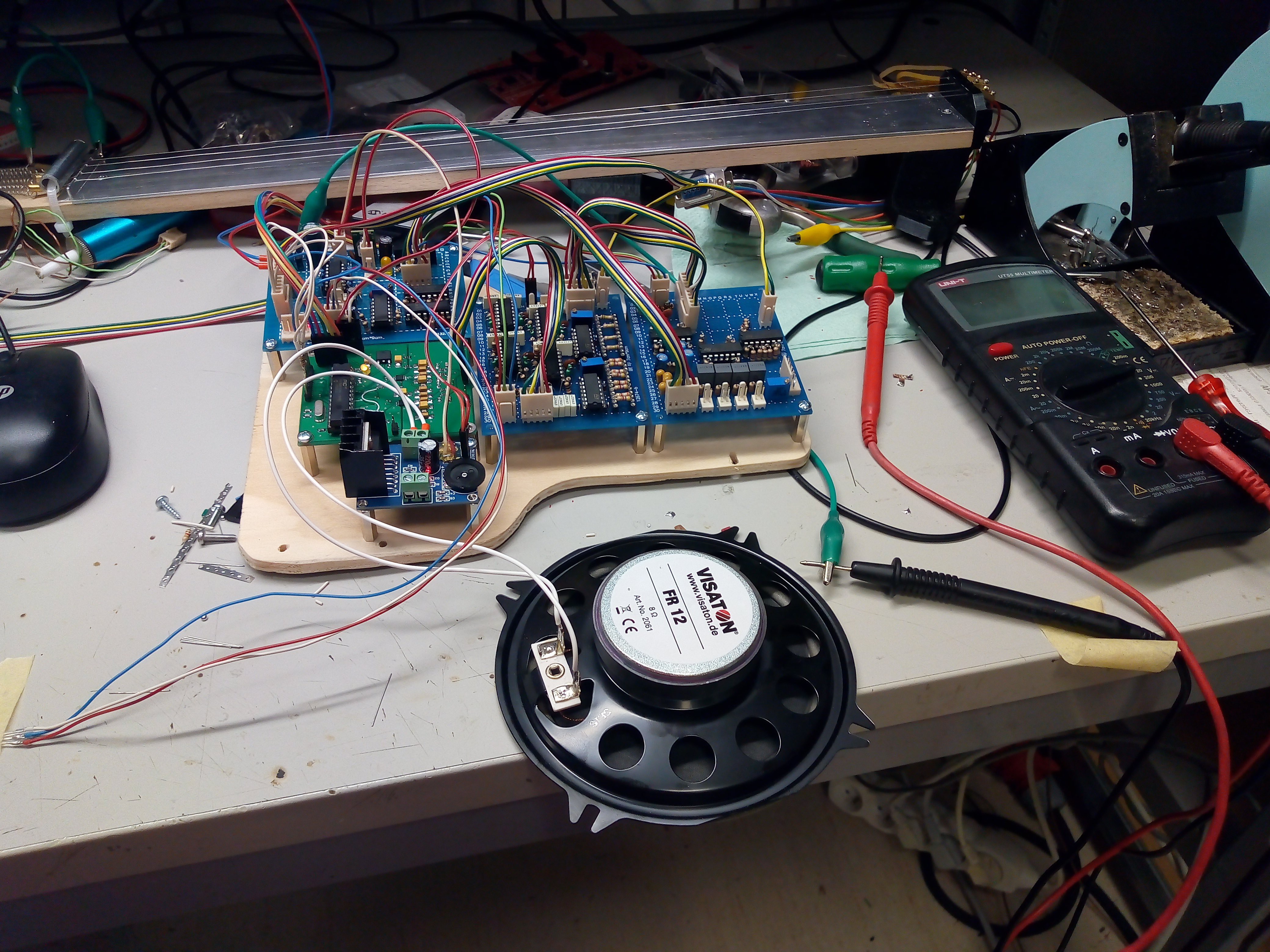
Mounted into instrument
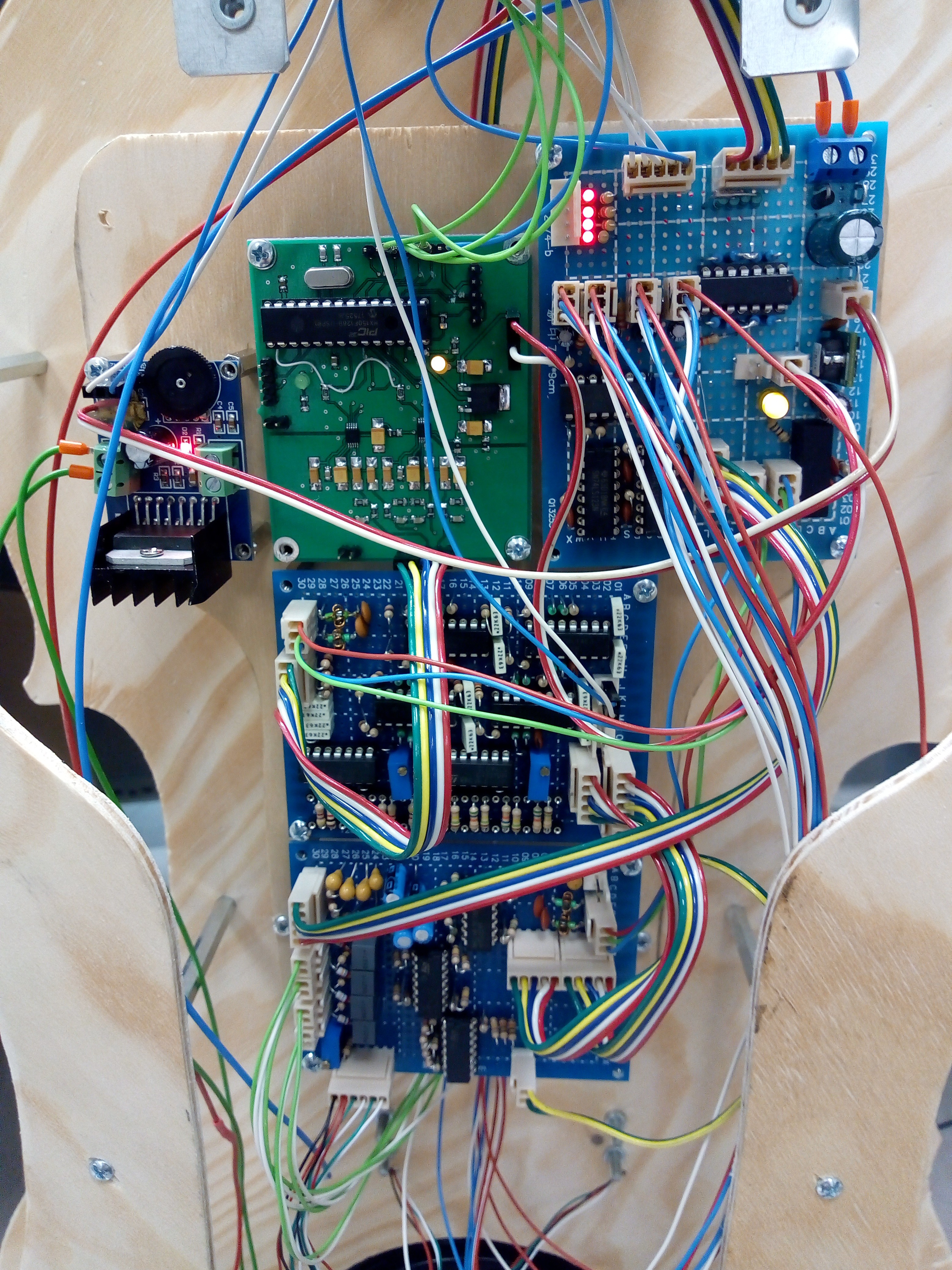

And complete instrument
 Added are some more photos capturing bow and detail of strings fixation
Added are some more photos capturing bow and detail of strings fixation
 Bow is magnetic strip - this one, but there are more manufacturers of similar thing. The string is glued on 720mm piece of 10mm U-shaped aluminium extrusion.
Bow is magnetic strip - this one, but there are more manufacturers of similar thing. The string is glued on 720mm piece of 10mm U-shaped aluminium extrusion.
 Resistor wires are fixed to steel wound strings - to keep resistor wire in mechanical tension - via brass screw terminals. Terminals are soldered together via piece of wire. I added aluminium round tube to press the strings against the end of fingerboard - L shaped aluminium extrusion with four cuts where strings of resistor wires are held in position.
Resistor wires are fixed to steel wound strings - to keep resistor wire in mechanical tension - via brass screw terminals. Terminals are soldered together via piece of wire. I added aluminium round tube to press the strings against the end of fingerboard - L shaped aluminium extrusion with four cuts where strings of resistor wires are held in position.
Other end of wires goes into brass screw terminals to be connected to wires going to instrument.
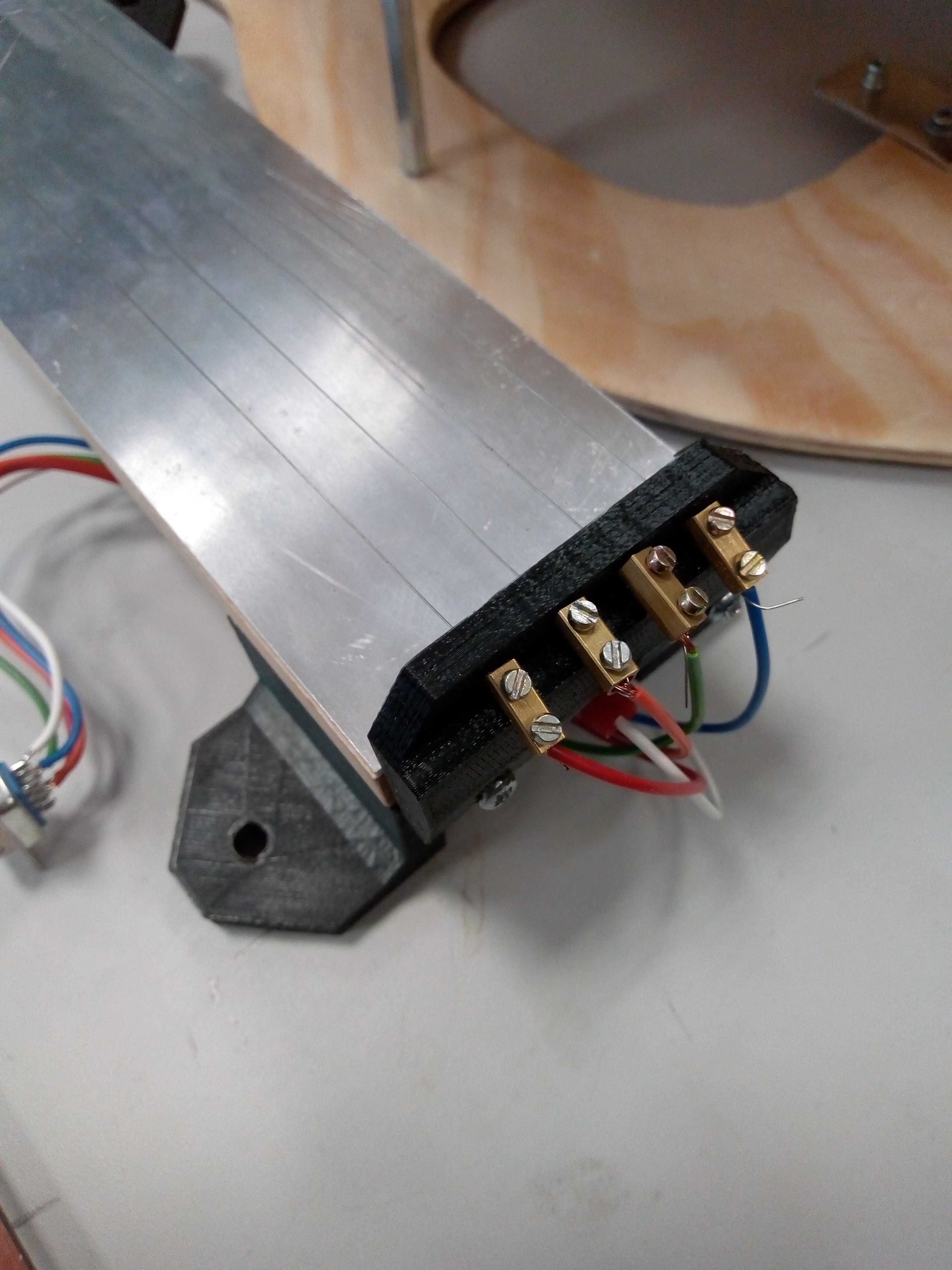 Whole fingerboard assembly is detachable, along with bottom pin, so dimensions of cello can be decreased for easier traveling or so.
Whole fingerboard assembly is detachable, along with bottom pin, so dimensions of cello can be decreased for easier traveling or so.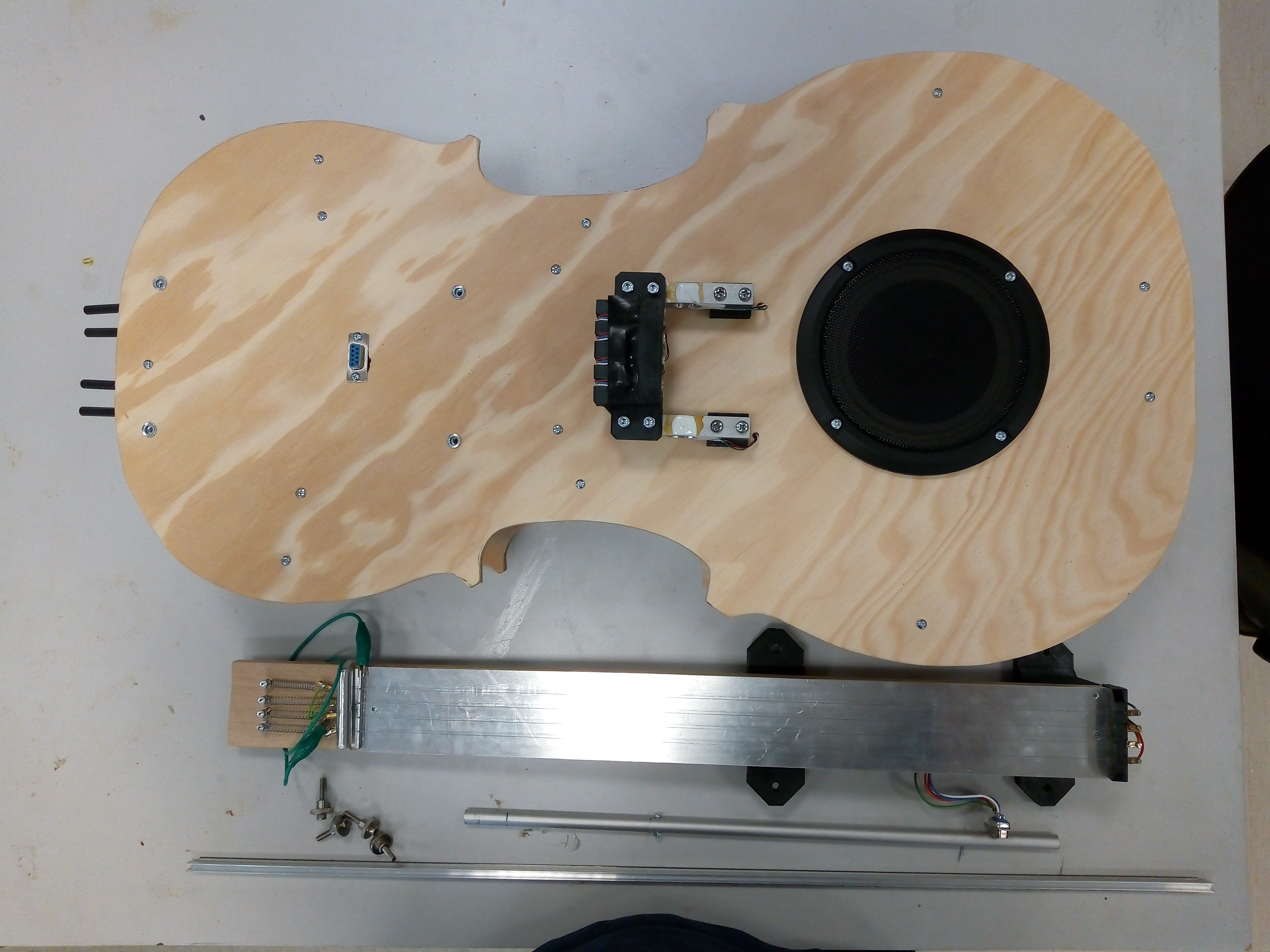
 jaromir.sukuba
jaromir.sukuba
Discussions
Become a Hackaday.io Member
Create an account to leave a comment. Already have an account? Log In.